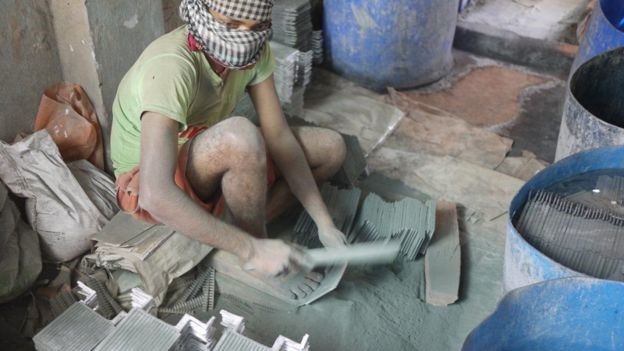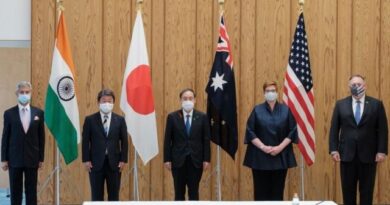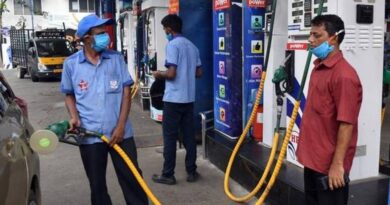The poison of lead is dissolving most in the blood of Indian children
According to a recent report related to lead poisoning, India is at the forefront of the world in terms of lead poisoning in children.
The report, prepared by an organization called UNICEF and PureEarth, states that one out of every three children worldwide suffers from lead poisoning, which can cause serious health problems.
According to the report, 800 million children in the world are affected by lead poisoning and most of these are in poor and low income countries. The impact of lead on such a large scale was not considered before.
Half of such a large number are in South Asia alone while 27.5 crore children are affected by lead in India.
My son’s vomiting is not stopping ‘
In the year 2009, four-year-old Sarabjit Singh was having frequent vomiting. His father Manjit Singh could not understand why his son’s vomiting was not stopping.
Manjit Singh, who lives in Uttar Pradesh, reached the doctor with his son. In the initial investigation, the doctor told him that Sarabjit has anemia, that is, lack of blood. However, the doctors could not explain the reason for this.
For the next few months, Sarabjit Singh’s health did not improve much, he kept getting nauseous again and again.
When Sarabjit’s blood was investigated, it was found that the amount of lead in his blood was forty percent more than it should have.
According to global research on lead exposure, Sarabjit is one of the 800 million children in the world who have been exposed to the deadly lead, causing serious damage to his health.
In this report, data from the Assessment of the Global Burden of Disease and the Institute of Health and Evaluation of the University of Washington have been analyzed in detail.
Lead poisoning affects children’s brain, their brain, day, lungs and kidneys.
The report stated, “Lead is a powerful neurotoxin that is a nerve affecting the nerves of the brain. In cases of low exposure, a lack of intelligence in children means a low IQ score, low attention and violent behavior later in life.” And may even lead to criminal behavior. “
“Unborn children and children under the age of 5 may be at greater risk of lead. They can also cause mental and cognitive problems, ie lack of understanding and intelligence, and permanent physical impairment forever. Due to lead poisoning Many children may also be at risk of death. “
After India, the countries most affected by lead poisoning in children are Africa and Nigeria. At the same time, Pakistan and Bangladesh are named in the third and fourth place in this list.
What causes lead poisoning
According to the report, the main reason for lead poisoning is unsafe re-cycling of lead acid batteries.
But with this, its use in electronic waste, mining and spices, paint, children’s toys can also be an important source of lead.
Nicholas Rees, the lead author of the report, told the BBC, “Since 2000, there has been a huge increase in the number of vehicles in poor and low income countries and this has led to an increase in the use and recycling of lead acet batteries.” Re-cycling is sometimes done in an unsafe way. “
According to the report, 85 percent of the total production of lead in the world is used to make lead acid batteries. A large part of this comes from the recycling of lead batteries used in vehicles.
According to the report, “the result is that out of the used lead acid batteries, at least the batteries reach the informal economy.”
“In uncontrolled and mostly illegal recycling, lead batteries are opened in an unsafe manner. This causes acid and lead dust to fall to the ground, melting the lead in open furnaces, causing its poisonous smoke air. Spreads and pollutes the entire surrounding area. “
Battery recycling work in homes
Experts say that this is a matter of concern in India.
“We have assessed 300 lead-contaminated sites across India, most of which are informal battery recycling sites and industrial areas with different types of factories,” says Promila Sharma of PureEarth, the report’s co-publisher.
The facts gathered were separately assessed by his organization which is a voluntary organization and works on the impact of environment on human and earth.
“Our assessment is only a small part of a difficult problem like this mountain,” says Promila.
She says “There are many places where illegal recycling of lead acid batteries is done, but often work is done in these places in secret. Sometimes people do this work in the backyard of the houses and this helps the people living in that area. The danger increases. “
His organization found that such irregular lat-acid battery recycling works most in West Bengal, Bihar and Uttar Pradesh.
“We also found that the work of re-cycling old batteries imported from Bangladesh and Nepal is also increasing in these places.”
Till ten years ago, Manjeet Singh, a resident of Uttar Pradesh, was filling his family’s stomach by recycling batteries. He used to keep these batteries at his home.
Manjeet says, “I had no idea that my son’s health would deteriorate due to my work.”
After his son’s health deteriorated, Manjeet immediately left this job. Sarabjeet’s treatment continued for many years, his body was blooded several times. Sarabjit’s lower limbs were deformed and he needed special shoes to walk.
Ten years have passed since then and now Sarabjit’s health has started improving. Sarabjit Singh is now 16 years old and his studies in school are also going well.
But his family is worried about him because the amount of lead in his blood is still high.
Manjeet Singh says, “He no longer has anemia but he has other health problems like hyperactivity.”
Lead leaking problem from inverter
A major reason for exposure to lead in India is also said to be the inverter, which is used to supply electricity in homes or shops during power cuts.
“We saw a similar case in Uttar Pradesh in which lead leaking from the inverter had a bad effect on the child’s health,” says Dr. Abbas Mehdi, head of the biochemistry department at King George Medical University, Lucknow.
“The parents of the child were completely unaware that the fluid falling from the inverter, which they are cleaning with a wipe, is actually doing so and spreading it all over the floor. This is where their child used to play on the floor And the lead started moving in his body. “
In India, the irregular handling of electronic waste and mining products can also lead to the risk of lead poisoning.
Some spices and herbal medicines can also be another source of lead in the human body.
Says Dr. Abbas Mehdi, “Lead in turmeric and red pepper powder is used as a preservative and in some cases to enhance their color.”
According to the UNICEF report, the amount of lead in the blood of 27.5 crore children in India is up to five micrograms per deciliter.
According to the World Health Organization and the US Centers for Disease Control and Prevention, this level of lead is dangerous and it requires governments to take steps in this matter.
Why is there more risk for children?
According to the report, the risk of lead poisoning is higher for infants and children below five years because it starts damaging their brain before it is fully formed. This can cause them mental and cognitive problems forever. Deformation may also occur in any of their organs due to this reason.
Experts say that compared to the ratio of body weight, children eat five times more food than adults, drink water and take in air.
Nicholas Rees says, “This means that they can also absorb this deadly neurotoxin in the ground, water or air in the body in greater amounts than adults.”
According to the report, the biggest challenge in terms of the risk of exposure to lead at an early age is that its symptoms do not show up for many years. Especially when the level of exposure is low and its quantity in blood is low.
Says Dr. Mehdi, “Lack of awareness is still a big issue in this matter, but gradually the situation is improving.”
He says “Lead fuel was banned in India in the year 2000. Now the paints used in the country also need to limit the lead to 90 ppm (million on parts).”
But the question still remains as to whether lead use in lead acid batteries, electronic waste and spices will be controlled?




